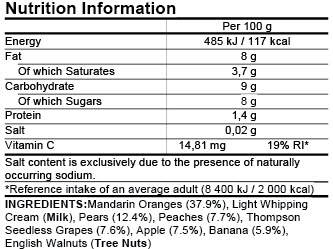Some Fundamental Differences Between Food Labeling in the US and Europe
Posted on 22nd Jun 2018

When they were first introduced about four years ago, the food labeling requirements of food products marketed in the European Union (EU) were designed to be similar to those in the US, and to address what were referred to as “international standards.” But now that the EU system (pictured) is in place, the food service industry is finding that the two systems have quite a few differences.
An excellent example of this is in the way the two systems communicate calorie counts, typically the most referenced section on a food label. In the US, nutritional labels must base calories on the number of servings. For instance, a US food label on a box of crackers might indicate that a serving of five crackers has 100 calories.
The EU system does not base calorie counts on serving size. In fact, the number of “servings per container” is not required on any EU food label.
Instead, calories are determined by the weight – usually in grams – of the entire package of food being selected. With this method, the EU consumer may be told, for instance, that all the crackers in that package contain 1,000 calories.
Both systems have their advantages. US consumers are accustomed to counting servings, so it works here. But the EU system allows consumers to compare the entire calorie count of a package of crackers with, for instance, a box of cookies or chips.
Some other fundamental differences between the two systems include the following:
- US food labels identify milligrams of sodium in foods whereas EU labels list salt content in grams. Although they are related, salt and sodium are not identical—sodium is a mineral, while table salt (or sodium chloride) contains sodium (about 40% by weight).
- In the EU, olive oil and palm oil must be declared “vegetable oils,” on the food label; this is not true in the US.
- Want to make sure no Sodium caseinate is in the food you consume? In the US, food additives such as this must be listed by name on the food label. Not the case with EU labels. Instead, they are assigned an identifying number – a three- or four-digit code – known as an “E number.”
- US labels tend to be easier to read and understand. More information is placed in bold text, fonts are larger, and there is more spacing. EU labels tend to use a much smaller font; lines are spaced more closely; and there is no requirement for bold text.
- EU labels are not required to list as much information about nutrients in a product as compared to US food labels. Plus, they often omit such items as saturated fat, fiber, and sugar.
One of the biggest problems caused by these labeling differences is when a US food manufacturer wants to market items in Europe, or vice versa. In such situations, food manufacturers are advised to consult with food regulation experts in the targeted region.
However, if you are in North America and need more information on food labeling and food labeling terminals, contact a DayMark Safety Systems representative.


